Energy Culture in Hasbro’s 1980s Universe
By Hervé St-Louis
September 14, 2008 - 00:21
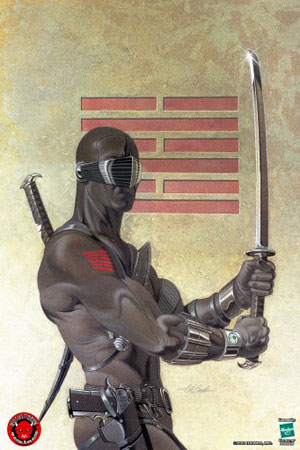 |
Looking at the revival of properties from toymaker Hasbro, one could say that everything that was popular in the 1980s, is popular again today, in the 2000s. At first, pundits claimed that there was a claw back effect created by the nostalgia of 1980s children growing up as eternally adults trying to claim back some of their childhood back. I propose that there is another reason for the popularity of Hasbro properties like G.I. Joe and the Transformers that are not explained by nostalgia.
Many of the themes found in the Transformers and G.I. Joe are still current with today’s public. War and the terrorism, as exemplified in G.I. Joe and its fight against Cobra a multinational terrorist organization bent on destroying the American way of life that has to be opposed by an elite military group from all of the United States arm forces’ branches.
In the Transformers, giant robots that can transform into technological devices like cars, airplanes, or weapons, there is a constant arms race between the two factions, the peace-loving Autobots that protect humans from the war mongering Decepticons.
Both terrorism and military arms races are current topics that still affect the North American public today. Since the terrorist attack on New York City on September 11, 2001, the American government has been fighting a “war on terror” against Islamic groups around the Middle East and other parts of the world. Other countries, in Europe, and Asia, such as China and Russia are also embroiled in this fight over terrorism.
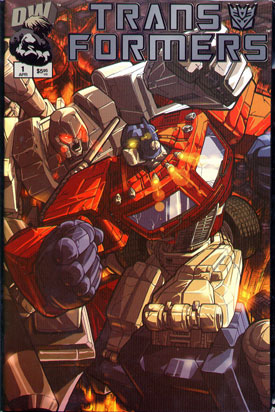 |
In the case of the arms race, it is no longer a typical arms race facing set in a Cold War, as it was in the 1980s. It is a generalized arms race that opposes several nations. Many of them are military allies, normally. This generalized arms race can also be seen on the corporate side of the world, in places such as the mobile technology debate where companies such as Apple are facing Research in Motion. On the Web, Google, Yahoo and Microsoft are waging a continuing fight to dominate the eyeballs of the public and be the platform the latter will use in their daily computing activities.
Themes found in the fictional worlds of G.I. Joe and the Transformers are as relevant today as they were in the 1980s. Thus presenting a new version of old properties like G.I. Joe and the Transformers to today’s public is a safe bet, as long as they simply update older themes explored in the 1980s and improve on the characterization and the storytelling and the visual appearance of the properties for a new generation.
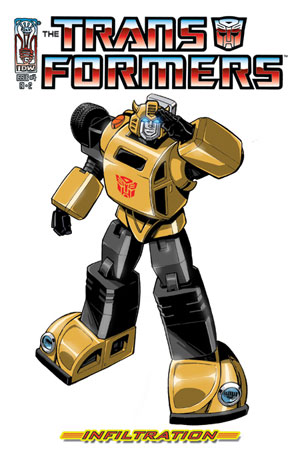 |
Looking at the various comic book series published by Dreamwave Productions, Devil’s Due and IDW Publishing since the early 2000s, one can see a focus on improving characterization, storytelling and the visual appearances of the properties. However, these simple updates would not explain the popularity of these properties if it were not for the fact that they borrowed heavily from older themes such as terrorism, arms races but tend to ignore the energy crisis from the 1980s.
The energy crisis of the 1980s should probably be appropriately called the energy crisis of the 1970s. This crisis was the result of the members of the Organization of Arab Petroleum Exporting Countries, plus Egypt and Syria to stop providing oil to countries supporting Israel. Effects of this political action were rising energy costs, rationing of reserve and an attempt of many nations to limit their dependence on oil, or to look for alternative energy sources. On toymaker Hasbro, the direct result was the reduction of the size of its action figures. The G.I. Joe line of toys was introduced as a 3 ¾ inch action figure line, instead of a 12-inches line, in 1983.
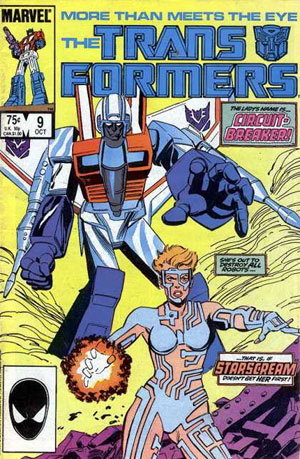 |
| Transformers #9 Vol. 1 |
Incidentally, this concern for energy also influenced the contents of the stories about both G.I. Joe and the Transformers. In the Transformers’ comic books and cartoon series of the 1980s, the main point of contention between the Decepticons and the Autobots is the consumption of energy resources and its harvest. The Decepticons, besides wanting to rule the universe, constantly look for ways to find energy sources for themselves, their native planet Cybertron or their weapons. The original reason the Transformers left Cybertron in many of the original stories from the comic books and the 1980s cartoon series, was to look for new sources of energy. In many instances, the Autobots collaborated with humans in order to satisfy their energy needs. For example, in Transformers #9, Vol 1, Autobot Jazz negotiates an agreement with oil tycoon G.B. Blackrock to fuel the Autobots in exchange for protection. In the third part of More Than Meets the Eye, the first cartoon mini-series featuring the Transformers, human Spike Witwicky mentions that governments of the Earth have approved a request of the Autobots to provide them with fuel in exchange of their defeat of the Decepticons.
In G.I. Joe, concerns for energy were more frequently seen in the cartoon series begun in 1983. In the first mini-series pitting G.I. Joe versus the terrorist organization Cobra, three sources of energy, from unusual sources such as a meteorite, heavy water and special crystals were necessary to power a teleportation device that could move armies and landmarks. Although several episodes of the original cartoon series featured the quest for new sources of energy, it was the G.I. Joe the Movie, incidentally, which was never released in theatres, that most demonstrated the need and fight for new energy sources. In the film, Cobra stole the Broadcast Energy Transmitter, shepherded by G.I. Joe to power space spores that could transform humans into animals!
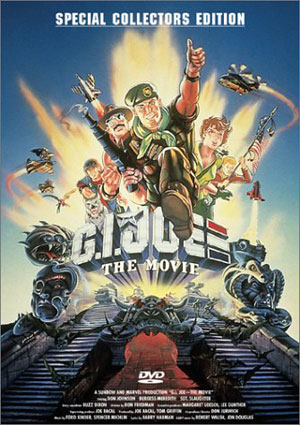 |
| G.I. Joe The Movie |
No matter how ludicrous the themes and need for energy in these children’s cartoon were it is still remarkable that one constant motivation for all protagonists, be they Decepticons Cobras, G.I. Joe soldiers or Autobots was energy, and its proper allocation as an element of victory and domination against opponents. As has been mentioned in the G.I. Joe DVD collection, featuring the first and second cartoon mini-series, the writers at the time were influenced by current world events and of course, the quest for energy was a major theme in their stories.
It’s amazing how the writers of both G.I. Joe and the Transformers were capable of inserting world themes so thoroughly and efficiently in the stories they presented to a younger audience. I would argue that the theme of energy is mostly absent from the current crop of comic books that have come up since the revival of the G.I. Joe and the Transformers in the 2000s. While attempting to rejuvenate their stories for a new and aging audience, the creators of G.I. Joe and the Transformers in the comic book world largely ignore one constant motivation that made the properties relate on a political and societal level with its audience. They ignore the involvement of world issues, such as an energy crisis that affect even the shape of toys G.I. Joe and the Transformers are based on.
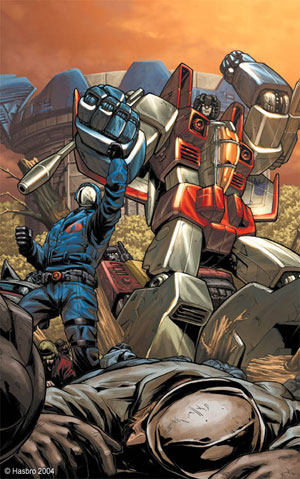 |
Related Articles:
Rancor Crowdfunding Attempt by Hasbro a Failure
Aw Yeah!: Hasbro Action Figure Jam comics review
The Nerf of Hasbro
Hasbro's Digital Future
Energy Culture in Hasbro’s 1980s Universe
Hasbro Finally Gets Marvel Legends
Hasbro's Millennium Falcon
Hasbro Gobbles Cranium, Inc.
Marvel License Impacts Hasbro
Hasbro's Transformers' Merchandize
